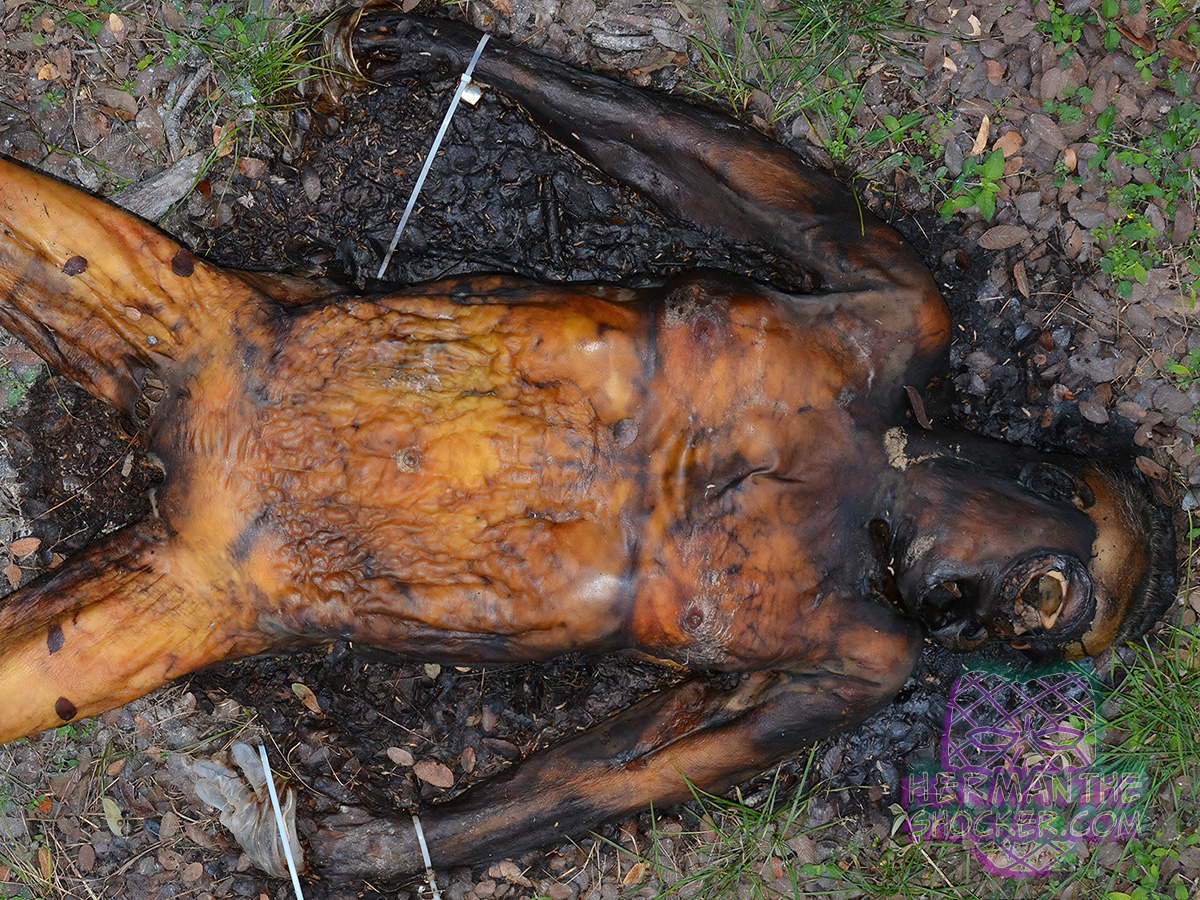Cadaver decomposition island is the area of concentrated decomposition fluid surrounding decomposing remains. Associated with active decomposition is the increased release of decomposition fluid (volatile fatty acids [VFAs]) from the body, causing discoloration of the surrounding vegetation, a change in the soil pH, and an increase in nutrients available for environmental microbes.
The release of decomposition fluids results in the formation of a highly concentrated island of fertility, or cadaver decomposition island (CDI). CDIs are associated with increased soil microbial biomass, microbial activity (C mineralisation) and nematode abundance. Each CDI is an ephemeral natural disturbance that, in addition to releasing energy and nutrients to the wider ecosystem, acts as a hub by receiving these materials in the form of dead insects, exuvia and puparia, faecal matter (from scavengers, grazers and predators) and feathers (from avian scavengers and predators). As such, CDIs contribute to landscape heterogeneity (diverse in character or content). Furthermore, CDIs are a specialized habitat for a number of flies, beetles and pioneer vegetation, which enhances biodiversity in terrestrial ecosystems.
Decomposition fluid, primarily composed of VFAs, is the direct product of both autolysis and putrefaction, breaking down the body tissues. It is specifically formed from the decomposition of fat and muscle and is extremely important in active decomposition, until the point at which skeletonization is achieved.
The purging and leaching of decomposition fluids from the body produce the diagnostic soil stain associated with a corpse, as the pH of the fluid interacts with the pH of the surrounding soil. The change in pH in the soil causes a darkening, or burnt look, of the surrounding vegetation and leads to the eventual death of the vegetation, as the optimal soil pH necessary to support certain plants is compromised. The soil stain can remain for the better part of 1 year or a full cycle of seasons before renewed plant growth ensues and the stain dissipates.
Skin slippage, discoloration, and bacterial growth continue throughout active decomposition, causing a major reduction in the cadaver’s biomass. Advanced decomposition (initial skeletonization) involves the purging of decomposition fluid through the natural body orifices (mouth, nose, rectum, and genital areas), causing a deflation of the body and wrinkling/crevice formation in the remaining skin, as well as vegetation death around the body. In addition, this stage causes the most significant biochemical changes in the surrounding environment because of the large amount of VFAs entering the soil.
Latest posts














